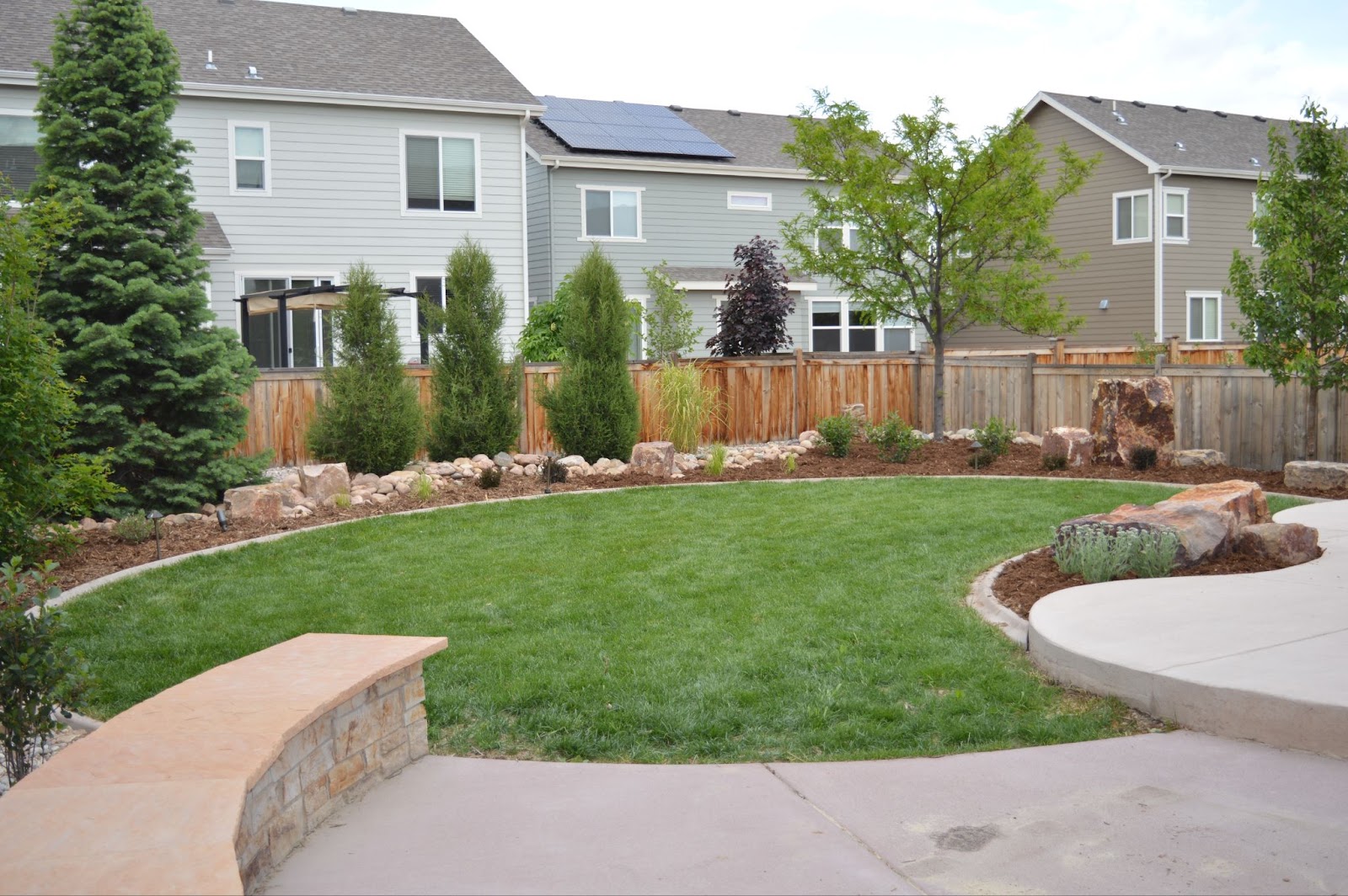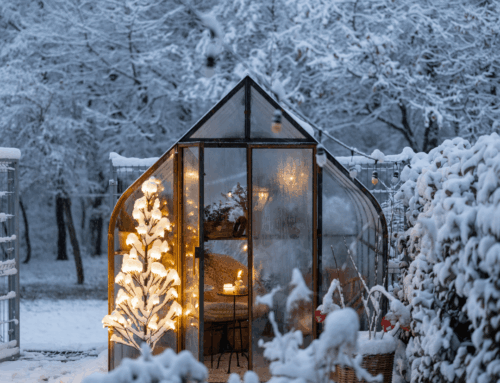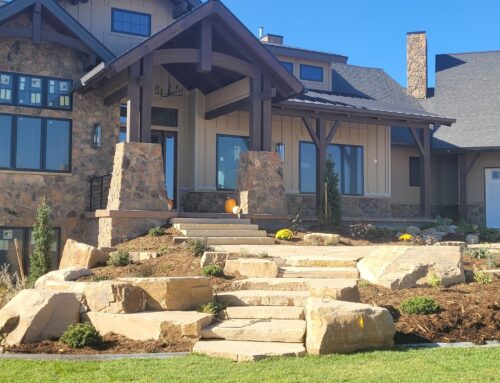Colorado winters can be harsh, with freezing temperatures, heavy snowfalls, and biting winds that can wreak havoc on your garden, trees, and lawn. But don’t worry—there’s still time to ensure your landscape is protected and well-prepared to withstand the remainder of the winter season. At Grounded Landscape Designs, we know how crucial it is to keep your outdoor space in top shape, even in the colder months. Below are some essential steps to help safeguard your landscape through the rest of winter, so it will bounce back healthy and vibrant when spring arrives.

1. Continue to Water Your Landscape on Mild Days
Although the cold weather has arrived, plants still need moisture to make it through winter. On those milder days when the temperature rises above freezing, take the opportunity to deeply water your trees, shrubs, and garden beds. This ensures that your plants have enough moisture stored in the soil to endure the cold and dry winter air.
If you haven’t done so already, make sure your irrigation system has been properly drained to avoid damage from freezing water. It’s also a good idea to check on your landscape’s watering needs to ensure it’s prepared to handle the continued freezing conditions.
2. Add or Adjust Mulch Around Your Plants
With winter fully upon us, a fresh layer of mulch will provide your plants with much-needed insulation. If you haven’t yet applied mulch, or if the existing layer has settled, now is a great time to top it off. Mulch acts as a protective barrier against the cold, helping to regulate soil temperature and retain moisture. For plants that are particularly vulnerable to extreme winter temperatures, consider adding 3–4 inches of mulch around the base, but avoid piling it directly against the plant stems to prevent rot.
Even though winter is in full swing, the ground will continue to fluctuate in temperature, and mulch helps keep roots from freezing. This simple step can significantly improve your plant’s chances of surviving the rest of the season.
3. Wrap Trees and Shrubs for Added Protection
The cold winds and snowstorms of winter can cause damage to vulnerable trees and shrubs, especially those that are younger or newly planted. If you haven’t already wrapped your trees, it’s not too late! Tree wrap, burlap, or breathable tree protectors can shield your plants from sun scald and windburn, which can severely damage their bark.
If snow accumulation has been heavy, consider gently brushing off the snow to prevent branches from breaking under the weight. Be sure to check on the wraps periodically to ensure they aren’t too tight, which could lead to other issues. Protecting your trees and shrubs now will help them recover quickly when warmer weather returns.
4. Prune Dead or Damaged Branches, But Avoid Excessive Pruning
While it’s important to remove damaged or dead branches to prevent breakage from snow or ice, avoid heavy pruning during the middle of winter. Excessive pruning can stimulate new growth that is vulnerable to frost damage. Stick to trimming only those branches that are clearly dead or broken, as these are the most at risk for causing further harm during a storm.
Pruning can be more beneficial when done in late winter or early spring, when the risk of frost has passed, and plants are preparing for new growth. However, proper pruning is necessary to ensure your landscape isn’t susceptible to further damage from weak or unhealthy branches.
5. Inspect Your Landscape for Pests
Even though the cold weather has arrived, pests don’t always hibernate. In fact, they can often take advantage of the protected spots in your garden or around your trees. Look for signs of rodents, such as burrows or chewed tree bark, and use deterrents like mesh wire or safe repellents to keep them at bay.
Another important step is to remove any debris from your landscape. Fallen leaves or dead plants can harbor insects or mold that could affect your plants when spring arrives. A clean, tidy landscape will help reduce the likelihood of these problems and ensure your plants are in the best condition for the long winter ahead.
6. Prevent Snow Mold on Your Lawn
Snow mold is a fungal disease that thrives in the snowy conditions of winter, especially if snow accumulates on your lawn for extended periods. Preventing snow mold involves raking up any leaves or excess grass clippings before the snow falls, as these organic materials can foster the growth of mold under the snow.
If snow mold does appear when the snow melts, treat it early with a fungicide to prevent further damage. Keeping your lawn clean and clear of debris now will help ensure it’s healthy when the snow finally recedes.
7. Clear Walkways and Driveways with Care
As the snow continues to pile up, you’ll need to clear your walkways and driveways to prevent dangerous ice buildup. However, it’s important to be mindful of the products you use to de-ice your surfaces. Many traditional de-icing products can harm your landscape, especially plants, lawns, and hardscaping.
Opt for eco-friendly, non-toxic de-icing solutions like sand, which will provide traction without damaging your lawn or garden. When shoveling snow, avoid piling it on your trees, shrubs, or garden beds, as this can damage your plants and create a breeding ground for mold.
8. Add Winter Interest to Your Landscape
Even though winter has set in, that doesn’t mean your landscape has to be dull. Adding winter interest to your yard can help brighten up the season. Consider incorporating evergreen shrubs, ornamental grasses, or winter-blooming plants that provide color and texture even in the coldest months.
You can also add decorative items like bird feeders, sculptures, or string lights to enhance your outdoor space during the winter. A little creativity can turn your winter landscape into a stunning focal point, no matter how cold it gets.
Give Your Landscape the Care It Needs This Winter
The cold temperatures during the winter months can be tough on your landscape but proper care and a little extra protection can help your outdoor space thrive when spring rolls around. By taking action now, you’re ensuring your plants, trees, and lawn are ready to bounce back when the weather warms up. At Grounded Landscape Designs, we’re dedicated to helping you maintain a healthy and beautiful landscape year-round. If you need help winterizing your outdoor space, don’t hesitate to reach out. Together, we can ensure your landscape survives the winter and flourishes in the spring.




